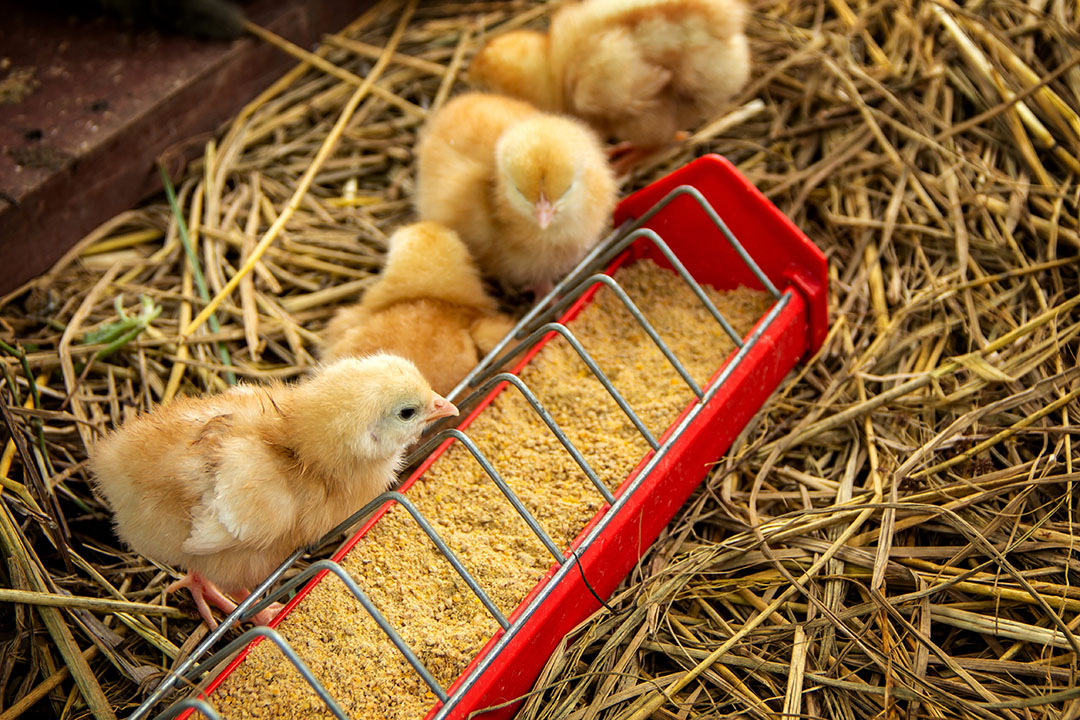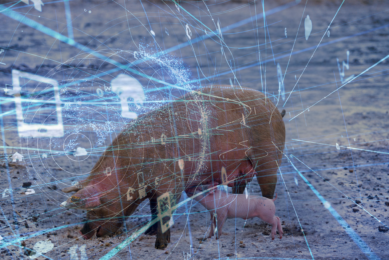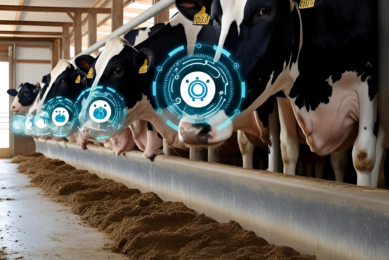Young animals: The motivation to eat is key to success

Who has not seen poor animal performance because of a too late ingestion of the first feed by a calf, piglet, or chick?
In animal production, we know that a delay in feed ingestion for a young animal will lower its performance even long after this early physiological stage and will induce weaker and less productive animals. But how to convince a young animal to search and eat its first feed as early as possible?
What are the parameters responsible for a delay in feed ingestion?
The beginning of a calf’s, piglet’s, or chick’s life is full of challenges that can be physiological or behavioural: immature digestive organs, feed transition, variation of living conditions, etc. If we have a closer look, one of the first reactions in front of the different challenges is to instantly lower the feed or even stop eating. These drops in feed intake, especially when they occur at the beginning of an animal’s life, induce delays that will impact the animal and its performance throughout its whole cycle of production:
- Growth
- Production
- Live weight
- Health
The challenge is to convince the young animals to eat early enough and in sufficient quantities in order to avoid any feed intake delay accordingly, that will reduce its performance. Can we act on animal motivation to eat? And how?
3 ways to boost the motivation to eat
A young animal’s motivation to eat can be triggered by a combination of different factors:
- Attraction
- Appetite stimulation
- Palatability
![]() Attraction
Attraction
Attraction is key to motivating a young animal to search for its first feed. Indeed, by nature, ruminants are attracted by specific molecules as are pigs and poultry. Indeed, the animals are by nature unconsciously attracted by specific volatile compounds: some can be common to all species, others are species-specific. If the first feed releases these attractant molecules, these will be sensed by the animal’s olfactory receptors and recognised by the brain as something of interest.
![]() Appetite stimulation
Appetite stimulation
Once the animal eats the feed, how can its appetite be stimulated? The first thing to consider is that the appetite is in fact a message sent to brain, which can actually be activated by specific compounds identified by the oropharyngeal receptors. Specific compounds can play this role of triggering the appetite message.
![]() Palatability
Palatability
Finally, the taste remains a very important parameter to take into account. Whatever the attraction, if the feed doesn’t taste good enough, it will not be consumed properly. Considering that all species are gifted in terms of taste sensing (even poultry!), what better way of getting an animal to eat than to offer it feed that completely suits its taste receptors?
How to trigger these 3 levels of motivation easily?
Creating the necessary attraction
Species-specific attractant molecules have to be released from the feed into the air. Ruminants will be unconsciously attracted by these molecules and will go where the concentration is at its maximum: at the feed. And so will the piglets and the chicks.
Stimulating the appetite message
When feed contains a species-adapted plant extracts core, specifically chosen and combined together, it triggers the oropharyngeal receptors and stimulates the specific appetite message in the brain. As such, when the young ones eat their starter feed, the appetite message in the brain will be activated and will motivate the animals to go back to the starter feed again and eat well. A virtuous circle takes place.
Enhancing the taste
A palatable core will enhance the palatability of the feed by bringing a well-balanced sweet taste. Sweet taste in nature is perceived as indicating the presence of energy and is appreciated by all species (humans included). This way, the numerous taste buds on the animal’s tongue will identify the taste as good.
A solution combining these 3 characteristics exists and has been tested on the field.
How do animals react with a feed containing Optifeed?
Just-weaned heifers were given a free choice between 2 types of feed – one with and one without Optifeed Ruminant – during 8 days. The young animals consumed each day on average 80% more (6 kg) of the feed containing Optifeed Ruminant compared to the control feed, starting from the very first day.
Optifeed Poultry given the first 7 days enables poultry to significantly increase their early feed intake compared to the control group (which did not receive it). The rest of the cycle, both groups received the control feed, without the natural solution. The group that received Optifeed poultry the first week kept its advance with higher performance: the gap increased constantly throughout the cycle right until the end of the cycle: +1.9% body weight (Figure 1). With a better early feed intake, Optifeed poultry also leads to less heterogeneity in a flock: -2% relative standard deviation (RSD) in feed intake, -9% RSD in body gain, -2% RSD in body weight.
Finally, Optifeed piglets enabled just weaned piglets to increase their feed intake of 5.7% compared to the control group (Figure 2), leading to an average daily gain improved by 7%. The difference is even higher when it comes to challenging feed (presence of medication for example).
Optifeed species-specific attractant molecules managed to motivate the animals to boost their early feed intake, and the appetite stimulation and enhanced palatability enabled a much higher consumption of the first feed. This translates to better animal performance afterwards.
Motivation is key in feed intake and can be easily triggered
Calves, piglets and chicks have weak physiology and behaviour at the beginning of their production cycle. They are not mature enough to face the challenges without help. Our challenge is to boost their early feeding during key stages, like just after weaning, so as to avoid detrimental feeding behaviour for the future performance. The balanced combination of very specific attractant molecules, the appetite stimulation and palatability makes Optifeed a very well adapted line to get animals to eat early in a short period of time, for a better start and hence better performance throughout the whole production cycle.
Author:
Aurore de Vienne, Marketing Product Manager for flavourings and sweeteners











